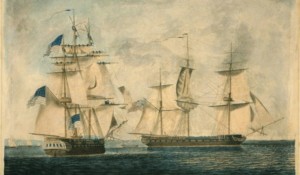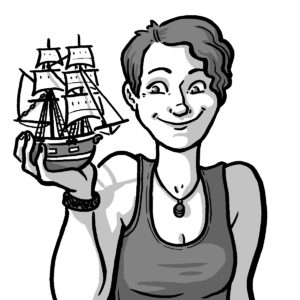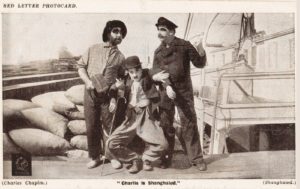In the late 1800s countless men were exploited by a system that used debt and indentured servitude to keep them tied to the shipping industry. The process of getting sailors into debt was called “crimping,” and it was practiced throughout the US and Britain, but was particularly prominent on the American West Coast. Quite a lot of mythology, folklore, and pseudohistory has grown up around the subject, most of it with no basis in the actual historical record. Nevertheless, Shanghaiing and crimping were very real, and until approximately 1915 the process of acquiring sailors looked almost nothing like how one would expect to hire labor on an open, fair market.
Pictured below are shipping papers from 1786. Possibly the most important part of the text is the following: In case they should, on any account whatsoever, leave or desert the said sloop without the Master’s consent, till the abovesaid voyage is ended, and the said sloop discharged of her loading, be liable to forfeit and lose what wages may at such time of their desertion be due to them, together with every their goods, chattels, &c. on board; renouncing, by these presents, all title, right, demand and pretensions thereunto for ever, for them, their heirs, executors and administrators. And it is further agreed by both parties, that eight and forty hours absence without leave, shall be deemed a total desertion, and render such Seamen and Mariners liable to the penalties abovementioned.

Related Links:
Shanghaiing Days by Richard H Dillion is a comprehensive, albeit dated, book on the subject, covering crimping throughout the US in the 1800s.
The Oregon Shanghaiers by Barney Blalock deals specifically with Portland and Astoria crimps.
For an Oregon-centric view of Shanghaiing, check out Kick-Ass Oregon History’s two podcasts on the subject here and here.
Podcast: Play in new window | Download
Subscribe:











